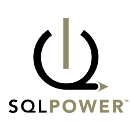Last year, as regulators across the world were grappling with the multiple effects of COVID-19 on their economies, one movement caught the attention of many of them: record-breaking volumes of consumer complaints. This trend, consistent in high-income countries such as the United States, was also observed in low- and middle-income countries such as Colombia.
This marked increase in complaints reflected the effect of the pandemic on household finances as well as the unintended consequences of an abrupt increase in the use of digital finance, due to social distancing and stay-at-home orders. The rapid expansion of digital activity increased the risk of fraud and scams to consumers, at a time when they were already more vulnerable.
This trend poses challenges to the oversight of financial services. Relying solely on traditional supervisory tools, such as on-site examinations, has become less practical as digital markets evolve rapidly and new players join the market. But new tools are becoming available, enabling supervisors to leverage data and technology to oversee increasingly digitized markets more efficiently and effectively.
Supervisory technology—or SupTech—is aimed to facilitate and enhance supervisory processes. While financial sector authorities have always leveraged data and technology, there has been a marked increase in new and ambitious initiatives in recent years, including for market conduct supervision. This specific use of SupTech solutions has grown in popularity and sophistication in the past few years, as shown in a recent survey by the International Financial Consumer Protection Organisation (FinCoNet). The topic will be discussed in a World Bank webinar in April.
Specific solutions for core market conduct supervisory activities
A recent World Bank technical note, The Next Wave of SupTech Innovation: SupTech Solutions for Market Conduct Supervision, expands on a previous discussion note by cataloging a range of solutions that financial authorities can deploy to support market conduct supervision. The note provides concrete examples of 18 SupTech solutions, drawing from the experiences of 14 financial sector authorities worldwide.
For regulatory reporting by supervised institutions, it presents application programming interfaces (APIs), automated dataflows (ADFs), and other systems that allow for automated and standardized reporting that collects, validates, transforms, and stores data in real-time. National Bank of Rwanda’s experience with data-pull technology to connect to and collect data directly from the databases of financial service providers (FSPs) is one of the examples examined in the technical note.
For collection and processing of complaints data—one of the most valued data sources for market conduct supervisors—the note explains how a complaints management system (CMS) is key to efficiently process complaints and manage data to maximize its accuracy and value to supervisors, as demonstrated by the example of Bangko Sentral ng Pilipinas. The application of advanced analytics to complaints, particularly to unstructured text, represents the next step for supervisors to deduce new insights on consumer risks in the market.
The technical note also examines how the Internet provides the opportunity to utilize a range of new, non-traditional methods for monitoring the market, another core activity for market conduct supervision. Web scraping allows for the monitoring of social media, online news, and websites, which can provide a real-time pulse on fast-moving consumer sentiment and provide early warning signals of emerging consumer risks. The Central Bank of Ireland’s social media monitoring is one such solution explored.
Finally, the note explores how advances in analytics have been most profound in the realm of unstructured text data. For example, natural language processing (NLP) solutions can ingest and analyze large quantities of documents, extracting insights in seconds. Given the more qualitative nature of market conduct supervision, advancements in the analysis of text present a potentially significant breakthrough to efficiently analyze credit agreements, documents obtained during examinations, and more.
A greater impact in lower-income countries
While SupTech adoption has been more pronounced in high-income countries, these solutions are highly relevant for lower-income countries, despite additional implementation challenges, such as underdeveloped supervisory risk frameworks, staffing, and resource constraints, and technology constraints among financial service providers.
Solutions vary in their complexity and cost. An incremental, targeted approach can work if scarce time, attention, and resources are used in a strategic manner. The note provides concrete examples where supervisory technology was adapted to the reality of countries with lower capacity and offers practical considerations for doing so.
SupTech solutions hold promise to help empower regulators to meet the supervisory challenges raised by the current COVID-19 pandemic, as well as those to come in the years ahead, as the financial sector becomes increasingly digitized. The initial successes of SupTech solutions offer a glimpse of the future—one in which data and technology become core to the operations, identity, and culture of financial authorities.
To be sure, SupTech is not a silver bullet. It does not replace supervision fundamentals, nor the pre-conditions needed for successful implementation. Yet, when combined with competent staff and a comprehensive market conduct supervision framework, SupTech solutions can better position supervisors for the challenges and opportunities ahead.
This article was published on WorldBank.org on March 29, 2021
Photo by DocuSign on Unsplash

